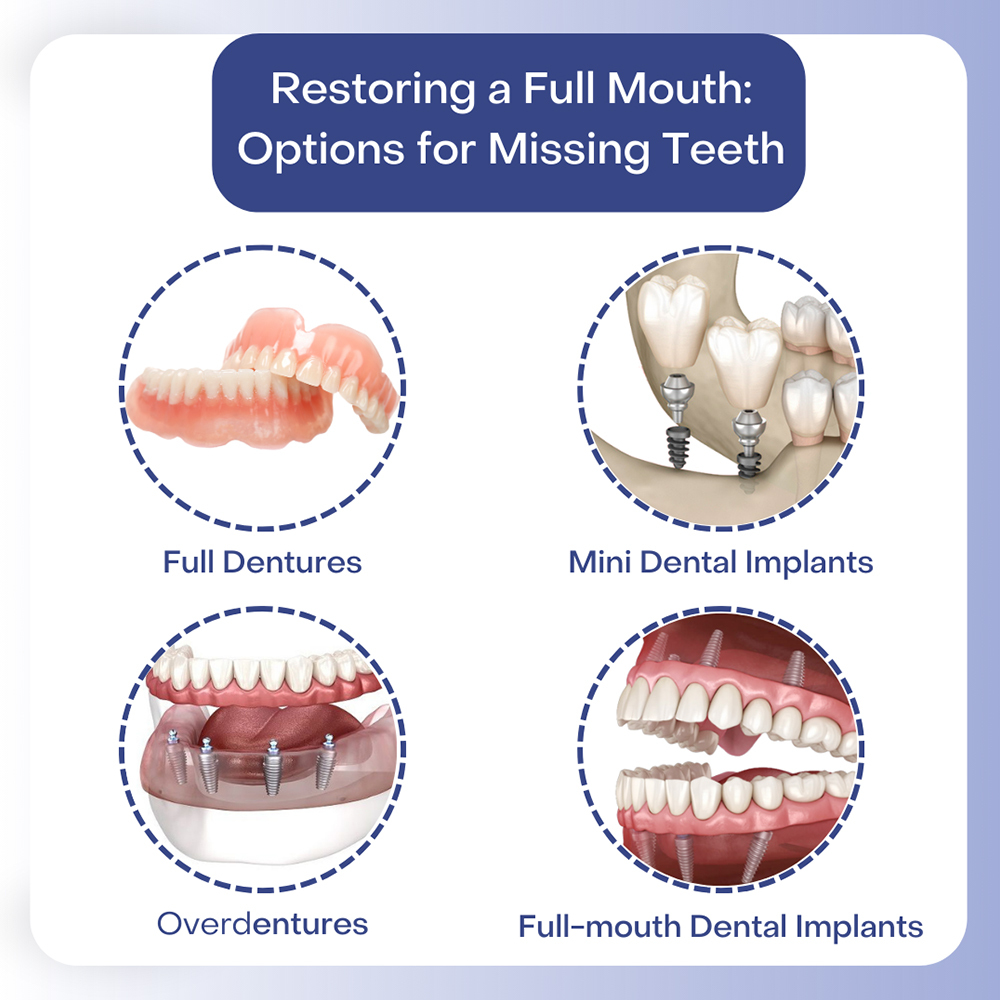Little Known Facts About Dental Sense.
Little Known Facts About Dental Sense.
Blog Article
Everything about Dental Sense
Table of ContentsIndicators on Dental Sense You Should KnowFacts About Dental Sense UncoveredSome Known Questions About Dental Sense.Not known Facts About Dental Sense
are medical devices surgically implanted right into the jaw to recover a person's ability to eat or their appearance. They provide support for man-made (fake) teeth, such as crowns, bridges, or dentures. When a tooth is lost due to injury or disease, a person can experience issues such as quick bone loss, defective speech, or changes to eating patterns that lead to discomfort.Dental implant systems contain a dental implant body and dental implant abutment and might additionally consist of an abutment addiction screw. Wisdom tooth cavity. The oral implant body is surgically put in the jawbone instead of the tooth's root. The oral implant joint is normally connected to the dental implant body by the joint fixation screw and extends with gums right into the mouth to sustain the connected man-made teeth
(https://www.openstreetmap.org/user/dentalsense1)Framework of The Oral Implant System choosing oral implants, talk with your dental copyright concerning the prospective benefits and threats, and whether you are a candidate for the procedure. Things to take into consideration: Your general health and wellness is an essential element in figuring out whether you are a good candidate for oral implants, how much time it will certainly require to recover, and exactly how long the implant may remain in place.
Smoking may influence the recovery process and decrease the long-term success of the implant. The recovery procedure for the dental implant body might take numerous months or longer, throughout which time you usually have a short-term abutment instead of the tooth. the oral implant procedure: Thoroughly comply with the dental health guidelines provided to you by your dental service provider.
Dental Sense Fundamentals Explained
Implant failure can result in the need for another medical procedure to take care of or change the dental implant system. Brings back the ability to chew Brings back aesthetic appearance Assists keep the jawbone from shrinking as a result of bone loss Maintains the health of the bordering bone and gum tissues Assists maintain nearby (neighboring) teeth steady Improves lifestyle Damages to bordering all-natural teeth during implant positioning Injury to the surrounding tissues during surgical treatment, such as sinus perforation Injury throughout surgical procedure (as an example, fracture of bordering jawbone) Insufficient function, such as really feeling like the teeth do not attack together usually A feeling that the tooth is loose or twisting in position resulting from a joint screw loosening up Implant body failing (looseness of the implant body) as a result of systemic infection, which might be more most likely in individuals with unchecked diabetes mellitus as a result of regional infection in bone and periodontals sustaining the implant body due to delayed healing, which might be a lot more likely in people who smoke Trouble cleaning the gum tissues around the implant, causing poor dental health Unattended gum condition Post-surgical pins and needles due to nerve impingement or damage Constantly alert health treatment carriers and imaging professionals that you have dental implants before any type of magnetic resonance imaging (MRI) or x-ray treatments.
FDA is not knowledgeable about any type of unfavorable occasions reported for MRI or x-ray treatments with oral implants. Oral implants systems are commonly made from products that follow worldwide consensus criteria of the International Company for Standardization (ISO) or ASTM International. These requirements have information of what makes a secure material.

An oral implant is a framework that replaces a missing tooth. With screw-like tools, the specialist inserts an implant right into the jawbone, and it acts as a support for an artificial tooth, called a crown.
Dental Sense Things To Know Before You Get This
Some people are not qualified for dental implant surgical treatment. It is for dental cosmetic surgeons to operate people with: acute illnessuncontrollable metabolic diseasebone or soft cells disease or infectionIf these problems are resolved, a a fantastic read person can have the surgical treatment. In, dental cosmetic surgeons avoid operating on individuals with: If individuals with any one of the above go through oral implant surgical treatment, there is a higher risk of the dental implant failing.

Dental dental implant surgical treatment is a personalized process. It's not the very same for everyone. Yet the adhering to offers a basic introduction of what you can expect your dental professional, dental specialist, periodontist or prosthodontist to do: Position the implant operatively. Provide you time to heal. Attach the message and final crown, bridge or denture.
Next, your doctor will very carefully put the dental implant right into your jaw. If your dental implant is near the front of your mouth, your dental practitioner will certainly make a momentary tooth for you to use until you recover.
The 6-Minute Rule for Dental Sense
Your service provider can inform you what to anticipate in your situation. During the healing stage, your jawbone must fuse to the oral implant. This process, called osseointegration, is essential for stability and lasting success. This procedure can take anywhere from three to 9 months. In some instances, it might take much longer.
When your dental implant heals, your dental practitioner can affix the joint (little port blog post) and your last restoration (crown, bridge or denture). This usually takes about one hour to complete and might require a 2nd small surgery. You shouldn't feel any kind of pain during your dental implant treatment since your service provider will certainly make use of medication to numb your gum tissues.
Report this page